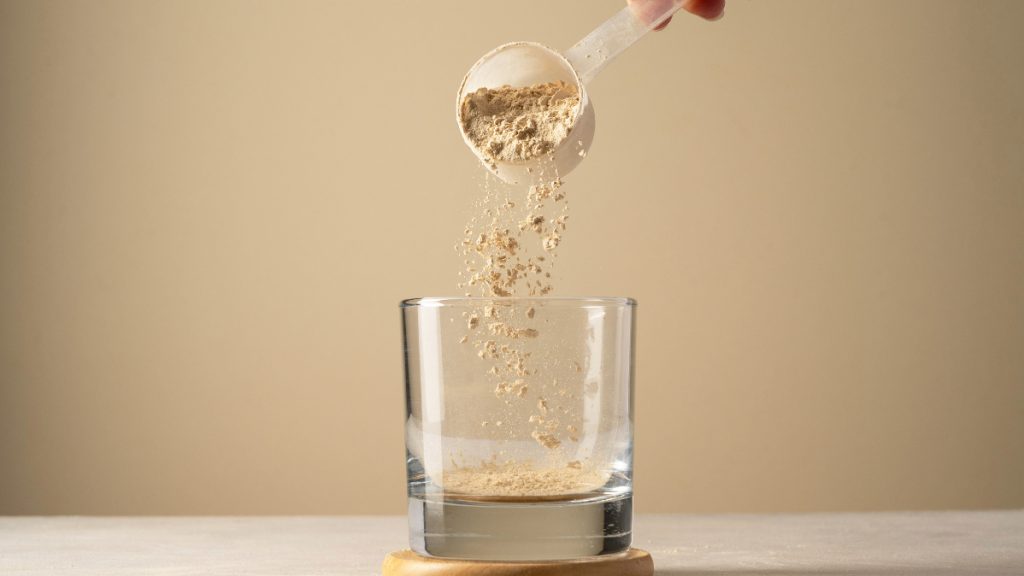Which is Better: Black or Red Maca? Comparing Benefits and Uses

ListedFit is reader-supported. When you buy through links on our site, we may earn a small commission.
When exploring the world of maca, a root native to the highlands of Peru known scientifically as Lepidium meyenii, you’ll find there are several types, each with unique properties. Among these, black and red maca are often singled out for their health benefits.
While they share certain nutritional profiles, each offers distinct advantages that cater to different health objectives.
My fascination with these roots began when I learned of their traditional use to boost energy and fertility, something that has been increasingly supported by modern research.

Determining which maca is superior depends on individual health goals. Black maca is frequently praised for its effectiveness in increasing mood, endurance, and learning, while red maca has been linked to improved prostate health in male rats and could be more effective at enhancing mood.
Both types are rich in nutrients and have been associated with a range of potential health benefits, from increased libido to a positive impact on hormone balance. Because they grow in the same harsh climates and originate from the same species, they share the core attributes of maca but differ in the specifics of their impact.
Key Points
- Maca, particularly black and red varieties, offers diverse health benefits.
- Black maca may be more suitable for cognitive and physical enhancements.
- Red maca could be the preferred choice for specific male health concerns.
Table of Contents
The Origins and Types of Maca
Maca, often referred to as Peruvian ginseng, is a plant indigenous to the Peruvian Andes. This section explores its historical significance and the distinctive characteristics of its various types.
Historical Significance of Maca
Maca has a rich history dating back thousands of years within the highlands of Peru. I find its traditional uses quite fascinating, especially considering that indigenous Peruvians used maca for both nutritional and medicinal purposes. The plant was so valued that it was even used as a form of currency during the Incan empire.
Different Varieties: Black, Red, and Yellow Maca
There are mainly three types of maca: black, red, and yellow. Each type hails from the Andes Mountains and exhibits unique properties:
- Black Maca: Often associated with improving memory and increasing energy and endurance.
- Red Maca: Has a reputation for its positive effects on prostate health and may balance hormones.
- Yellow Maca: The most common variety, typically linked to enhancing fertility and mood.
I find black and red maca fascinating because of their specific potential health benefits, but it’s important to understand that the efficacy and applications can vary widely. The choice between black or red maca won’t be the same for everyone, as individual health goals play a significant role.
Nutritional Profiles and Health Benefits
In my exploration of the two varieties, I’ll be focusing on the distinctive nutrient content of black and red maca and the specific health benefits that these nutrients provide.
Comparison of Nutrient Content
Black maca and red maca both offer a rich array of nutrients, although the concentrations and the types of nutrients can vary. Here’s a quick comparison:
| Nutrient | Black Maca | Red Maca |
|---|---|---|
| Antioxidants | Higher levels | Moderate levels |
| Amino Acids | More beneficial profile | Essential amino acids |
| Minerals | Rich in iron, calcium | Contains important minerals |
| Vitamins | Contains B-vitamins | Contains B-vitamins |
| Fatty Acids | Essential fatty acids | Essential fatty acids |
| Fiber | High insoluble fiber | Significant fiber |
| Polyphenols | Contains polyphenols | Contains polyphenols |
Black maca is often noted for having a more beneficial profile in terms of antioxidants and amino acids, while red maca still provides a valuable spectrum of vitamins and minerals.
Health Benefits Associated With Maca
Diving into the health benefits, I’ve found that black maca is particularly recognized for improving learning and memory. There’s also evidence suggesting that it might enhance energy levels and mood, and support bone health.
On the other hand, red maca has often been associated with positive effects on hormones, potentially influencing things like menopausal symptoms and overall hormonal balance.
- Black Maca: Improved cognitive function, better energy and mood, supports bone health.
- Red Maca: Benefits hormonal balance, mood enhancement, and has been used for improving energy levels.
Both types of maca seem to provide substantial health benefits, with the black variety edging out slightly in terms of cognitive and physical performance enhancers, while red maca is frequently linked to hormonal benefits.
Specific Benefits for Men and Women

In my exploration of maca, I’ve found that both men and women may experience unique benefits from its consumption, particularly when it comes to reproductive and sexual health.
Maca’s Impact on Men’s Health
Libido & Sexual Function: My research indicates black maca might significantly boost male libido and improve sexual function. Men may also find an improvement in sperm production and sperm count.
- Fertility: Notably, black maca supports male fertility, increasing not only the quantity but also the quality of sperm.
- Prostate Health: Red maca possesses properties that could benefit prostate health by potentially reducing prostate size, a common concern among men.
How Maca Benefits Women
Menopause & Menopausal Symptoms: Red maca in particular has shown promise in alleviating menopausal symptoms, helping to balance hormone levels during this transition.
- Sexual Health: It’s notable that maca can support women’s sexual health, possibly reigniting sex drive and improving overall sexual well-being.
- Reproductive Health: While I was looking into maca, I discovered that it might also play a role in enhancing female fertility and reproductive health.
In summing up these specifics, my understanding is that both black and red maca have distinguishing benefits that support the reproductive health and sexual well-being of men and women in different ways.
How Much Maca Should I Take? Consumption and Dosage

When I decide to add maca to my routine, choosing the right form and dosage is crucial for seeing the best results.
Forms of Maca: Capsule, Powder, and More
Maca comes in several forms, including capsules, powder, and gelatinized maca. I find that capsules are convenient and provide a pre-measured dose, which is great when I’m on the go.
Maca powder can be a versatile option, allowing me to adjust how much I use. I enjoy adding it to my smoothies or even baked goods for a nutritional boost.
The gelatinized form is pre-cooked to remove starch and can be easier for me to digest compared to raw maca. If digestion is a concern for me, I might choose the gelatinized variety.
Whether I prefer the convenience of a capsule or the flexibility of powder, I can find a form of maca that fits my lifestyle.
Recommended Dosages for Optimal Benefits
The optimal dosage of maca can vary based on the form I’m taking. Here is what I’ve found to work for me:
- Maca capsules: Typically come in doses ranging from 500 to 1,000 mg, and I can take up to two or three capsules a day as suggested on the product label.
- Maca powder: Starting with a daily dose of 1.5 to 3 grams seems to be effective for most purposes. I can mix it into my drinks or food.
While some studies suggest higher dosages could offer additional benefits, I always start with a lower dose to see how my body reacts and adjust accordingly.
It’s important for me to listen to my body and not exceed recommended dosages, especially when I’m just starting to take maca. If I have any health conditions or concerns, consulting with my healthcare provider before including maca in my diet is a step I wouldn’t skip.
Potential Side Effects of Maca

In this section, we’ll explore the potential side effects associated with maca consumption, particularly focusing on black and red maca.
It’s important to note that while maca is often consumed for its health benefits, some individuals may experience adverse reactions or should avoid it under specific circumstances.
Understanding Possible Adverse Reactions
I’ve gathered that maca generally has a safe profile for consumption, but there can be some side effects to consider. Most notably:
- Hormonal Changes: Maca may influence hormone levels, potentially impacting estrogen and other hormone levels. This might be a concern for those specifically sensitive to such changes.
- Sexual Dysfunction: While often used to support sexual health, in some cases, maca could potentially lead to issues if hormones are affected adversely.
- Mood Changes: Based on research, red maca might improve mood. However, any changes in hormone levels could also lead to mood swings or alterations in some individuals.
When to Avoid Maca Consumption
Certain conditions suggest that I should be more cautious with maca intake:
- Prostate Issues: Red maca has been shown to reduce prostate size in rats, indicating a potential effect on the prostate. So, anyone with prostatic hyperplasia or prostate cancer should be wary.
- Skin Conditions: Those of us dealing with acne or other hormone-related skin conditions might experience exacerbation since maca can influence hormone levels.
- Pregnancy or Breastfeeding: Due to the lack of research in these areas, it is prudent to avoid utilizing maca during pregnancy or while breastfeeding.
Frequently Asked Questions
In this section, I’ll help you understand the distinctive benefits each type of maca, red and black, offers for both men’s and women’s health, based on current knowledge and research findings.
What are the differences in benefits between red and black maca for women?
Red maca has been found more effective in improving mood, while black maca may not impact this aspect for women as significantly.
Which type of maca root is considered more beneficial for male health?
For male health, specifically sperm production, black maca appeared to be more beneficial as it increased spermatid counts.
What are the specific advantages of red maca for female well-being?
Red maca is notable for its potential to enhance the quality of life, particularly concerning mood enhancement, which is a common area of concern in female well-being.
Can you highlight the benefits that black maca has for women?
Black maca might offer some reproductive benefits, though these are less clearly defined for women as compared to men’s increased sperm count with black maca.
In what ways does maca root supplementation affect erectile dysfunction?
Research suggests that maca root, particularly black maca, may play a role in improving sexual desire and could potentially influence issues related to erectile dysfunction.
Is it possible and beneficial to combine black and red maca in a diet?
Nutritionally, combining black and red maca could provide a broader spectrum of benefits. They each have unique properties that may complement each other when included in a diet.
Author
-
Stuart Patrick is a health and fitness lifestyle journalist who writes for ListedFit.com.
“I've spent a lot of time trying to get in shape and change my body and I realised there are so many untruths in the health and fitness industry that can slow down or stop your progress, so I share my knowledge and experience to help others to cut through the BS.”
Latest entries
 NutritionJune 5, 2024Shilajit Products
NutritionJune 5, 2024Shilajit Products FitnessMay 14, 2024Donate Blood
FitnessMay 14, 2024Donate Blood GearApril 6, 2024HOKA Kawana 2 Review – Are These The Best HOKA Gym Shoes?
GearApril 6, 2024HOKA Kawana 2 Review – Are These The Best HOKA Gym Shoes? CrossFitApril 4, 2024How Many Pull-Ups Should I Do Daily? Let’s Figure it Out…
CrossFitApril 4, 2024How Many Pull-Ups Should I Do Daily? Let’s Figure it Out…
Affiliates:
This post may contain affiliate links that at no additional cost to you, the site may earn a small commission. We only recommend products we would use ourselves and all opinions expressed on this site are our own.
General Advice:
The information provided in this article is for general informational purposes only. It is not intended as a substitute for professional advice. Always consult with a qualified healthcare professional before starting any new diet, exercise program, or making changes to your health routine.
Accuracy Advice:
While we strive to provide up-to-date and accurate information, the content in this article may not reflect the most current research or medical guidelines. We encourage readers to do further research and consult with professionals for more personalized advice.
Our Recommendations:
The products and services mentioned in any of our articles are recommended based on our independent research and personal experience. We are not sponsored by any company. We aim to suggest products and services we believe are of high quality and could be beneficial to our readers.






